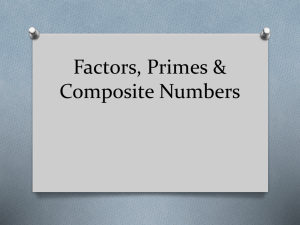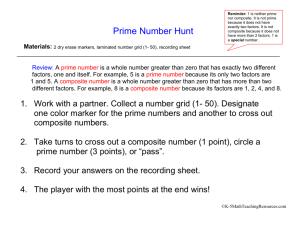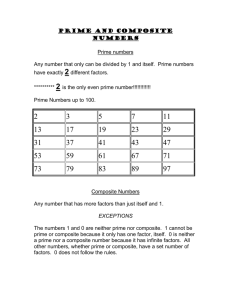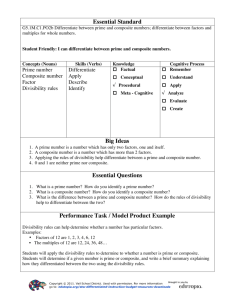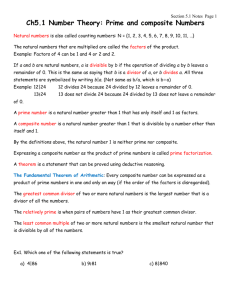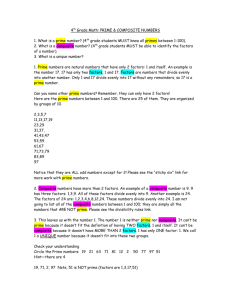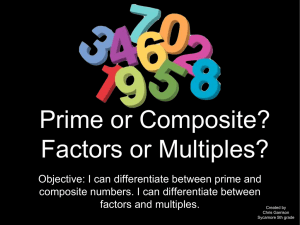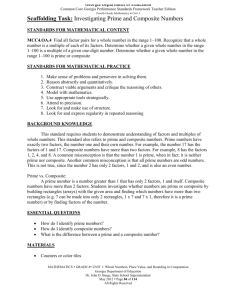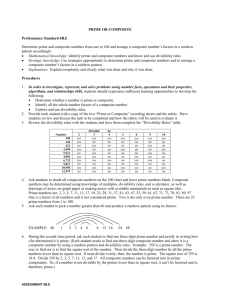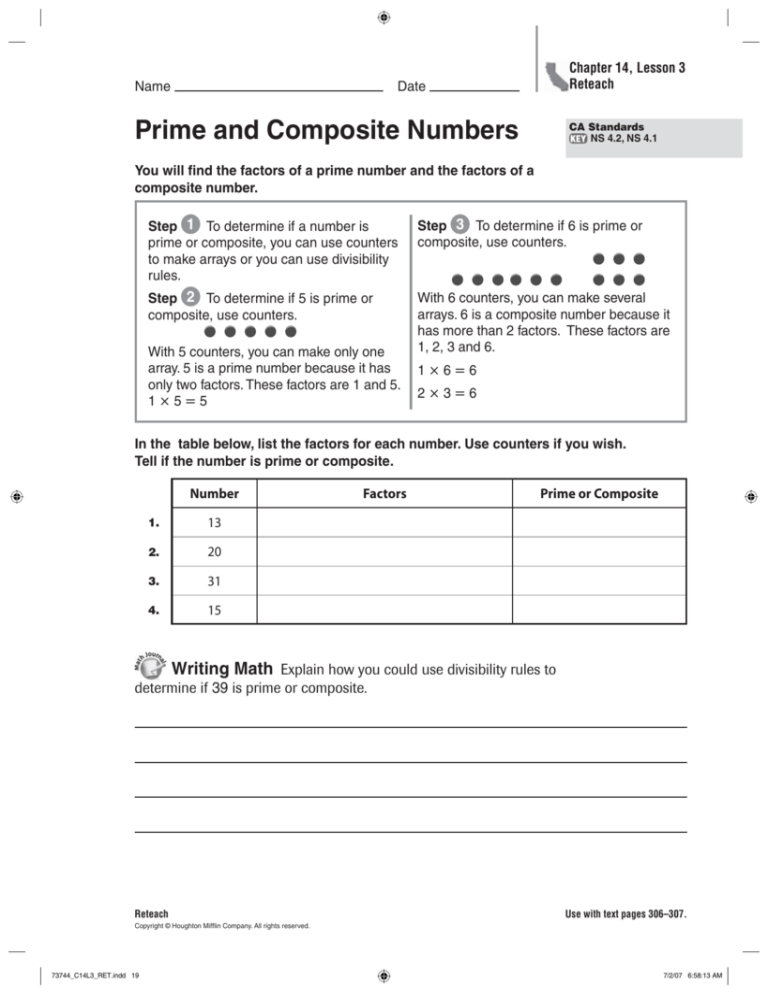
Name
Chapter 14, Lesson 3
Reteach
Date
Prime and Composite Numbers
CA Standards
NS 4.2, NS 4.1
You will find the factors of a prime number and the factors of a
composite number.
Step 1 To determine if a number is
prime or composite, you can use counters
to make arrays or you can use divisibility
rules.
Step 3 To determine if 6 is prime or
composite, use counters.
Step 2 To determine if 5 is prime or
composite, use counters.
With 6 counters, you can make several
arrays. 6 is a composite number because it
has more than 2 factors. These factors are
1, 2, 3 and 6.
With 5 counters, you can make only one
array. 5 is a prime number because it has
only two factors. These factors are 1 and 5.
1×5=5
1×6=6
2×3=6
In the table below, list the factors for each number. Use counters if you wish.
Tell if the number is prime or composite.
Number
1.
13
2.
20
3.
31
4.
15
Factors
Prime or Composite
Writing Math Explain how you could use divisibility rules to
determine if 39 is prime or composite.
Reteach
Use with text pages 306–307.
Copyright © Houghton Mifflin Company. All rights reserved.
73744_C14L3_RET.indd 19
7/2/07 6:58:13 AM

